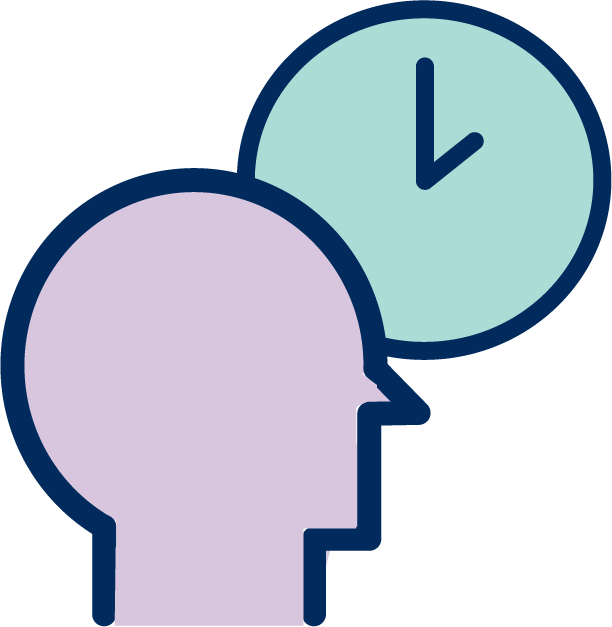By Betelehem Gulilat, Lead Writer & Editor and Philippa Gosine, Senior Research Assistant


Preserving a rich learning environment accessible for all students has been an ongoing commitment for many institutions. As faculties and administrators navigate the complexity of delivering courses online, it’s important for us to turn to our student community to understand the needs of students during this time. Our work at the Innovation Hub is centered around students and their unique stories with the goal of designing a campus experience inclusive for all. We recognize the importance of prioritizing accessibility and hope to inspire our community members to develop equitable strategies for accomodating students in their online learning.
To better understand the interplay of accessibility in virtual spaces, we connected with Philippa Gosine, our Senior Research Assistant at the Innovation Hub. Philippa is currently a PhD Candidate in Biomedical Engineering researching how the design of built environments can affect individuals. She brings valuable insight from her academic background and current work within the Innovation Hub, as well as her prior work as a teaching assistant in engineering design and Peer Advisor with Accessibility Services at UofT.
The dynamic challenges presented with virtual spaces
The pandemic has amplified new and existing barriers in accessing virtual spaces. Students have described issues in accessing reliable VPN and internet at their homes and relying on their phones to stream lectures and complete assignments in time. The inability to access spaces conducive for learning has also been a common concern for students – many now living at home with their families or friends, facing new distractions, noisier environments, and lacking the comfortability to work for long hours in their current study environment. In the wake of the pandemic, ‘zoom fatigue’ has also become a real emerging issue. With everything moving online, students are increasingly feeling unmotivated or in other words, ZOOMed out. Maintaining this internal motivation without a change in stimuli we previously possessed, such as working in the library or traveling with our peers to class, has been immensely challenging for students.
Aside from the direct barriers presented with online learning, there are a number of indirect paths that has affected the quality of learning for students. Some challenges brought up were the additional responsibilities assigned to them when returning home, such as taking care of family members, helping their child learn remotely or taking on chores at home. Students shared how financial insecurity and uncertainty caused by the pandemic has heightened their sense of anxiety. Also, being away from the campus community and losing face-to-face interactions has led many students to feel isolated since the lockdown. We acknowledge the intersection of these barriers and that it isn’t merely the number of barriers students truly face.
Reflecting on ways to make virtual spaces more accessible
The University is committed to ensuring all students are being treated in an equitable manner. Part of this commitment involves students’ learning and educational experience. This year, staff and students alike were placed in uncharted territories. As we continue to host spaces virtually, it is essential for us to design these spaces beginning with accessibility in mind. Below are a few approaches that can be incorporated when designing future virtual spaces – this can extend to workshops and events held for the larger UofT community:
Asking for participants’ needs in advance of a virtual session

- Emailing with session information prior to a live session
- Clear instructions on how to ‘call in’ to a virtual meeting and how to request accommodation needs
Creating multiple options for engagement

- Providing opportunities for students to ask questions
- Posting questions in the chatbox
- Asking for feedback through surveys or forms
Connecting students with the appropriate supports on campus

- Sharing supports and accessibility services at UofT before and during periods of examination
- Mentioning relevant services available for UofT students at the start and end of virtual sessions
Ensuring flexibility in course delivery and assessments

- Considering flexible deadlines for students
- Using synchronous and asynchronous methods of teaching
Utilizing tools and teaching practices to keep students engaged

- Incorporating breaks
- Posting questions in the chatbox
- Providing documents and photos that can be read by a screen reader
- Using familiar or user-friendly programs
- Considering which platforms have live captioning features
- Clearly outlining expectations
Integrating care in course design and materials

- Starting virtual sessions by checking-in with students
- Emphasizing the importance of mental and physical well-being throughout the term
- Providing various options for students to connect with professors
For students experiencing the barriers of technology, study environments, and added stressors, instructors can design courses and assessment methods with flexibility in mind. Some instructors have offered 24-hour examinations, which in theory adds flexibility, but students tend to spend 24-hours writing the exam than the typical 3-hour exam. This is an area that can be reflected upon when designing future modes of assessment. Nonetheless, students have expressed their appreciation for instructors conducting their courses in a more flexible format.
Designing a virtual space accessible for all students should be a key priority for community members at this time. How we measure success during this process should be based on our ability to empathize and adapt to the changing needs of students – it’s hard to design the most ideal virtual space overnight. As we educate ourselves on how to provide support more equitably, it is important to demonstrate care to students, peers and other supports. At the end of the day, we are all learning how to navigate this unfamiliar space together.
Links to UofT Accessibility Resources
For Faculty & Staff
- Tips for Accessibility When Moving to Online Couse Delivery
- Accessibility Checklist for Faculty: Planning for Online Courses
- Everything you need to know about academic accommodation
For Students
1 comment on “Designing Virtual Spaces with Accessibility in Mind”